Second Lieutenant Dick Pickstone was a member of the 17th Battalion, Manchester Regiment when he was killed in action, aged 21, on 12th October 1916 during the Battle of Le Transloy, part of the Somme offensive.
Early Life
Dick was by far the northernmost of all of the Fallen, most of whom originated in the South. He was born in Radcliffe, Lancashire on June 5th 1895 to Mary (née Bradbury, born Pilkington, Lancashire, 1865) and Eli (born 1866 in Radcliffe, Lancashire). Radcliffe lies to the northwest of Manchester. Dick’s forebears were manufacturers: cotton workers on his father’s side and iron foundry owners on his mother’s.
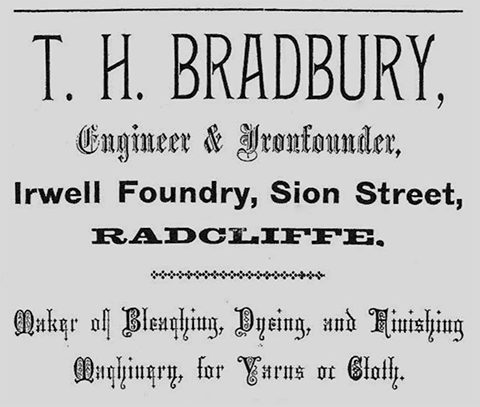
Mary and Eli had married on 12th August 1891 in St. Thomas’s Church, Radcliffe and Dick was the second of four children:
- Harry (b. 1892 Radcliffe, Lancs, d. 1949)
- Dick (b. 1895 Radcliffe, Lancs, d. 1916)
- Albert (b. 1897 Radcliffe, Lancs, d. 1982)
- Nellie (b. 1906 Beswick, Manchester, d. 2002)
Although Dick’s pre-school years were lived at Radcliffe—a cotton town in the centre of the triangle formed by Bolton, Bury and Manchester—sometime between November 1897 and April 1901 Eli and Mary moved with their three boys to Manchester. Eli, having worked his early years in the cotton industry, became licensee of the Railway Inn. The pub was their new home, sited on the corner of Ashton New Road and Viaduct Street in Beswick, 1½ miles east of the city centre.1
The immediate surroundings were a far cry from Dicks later College experience in Winchester’s leafy affluence. Ashton New Road was one of the main arteries heading east from the city and Beswick was a mix of terraces, heavy industry and railways, as the name Viaduct Street would suggest.
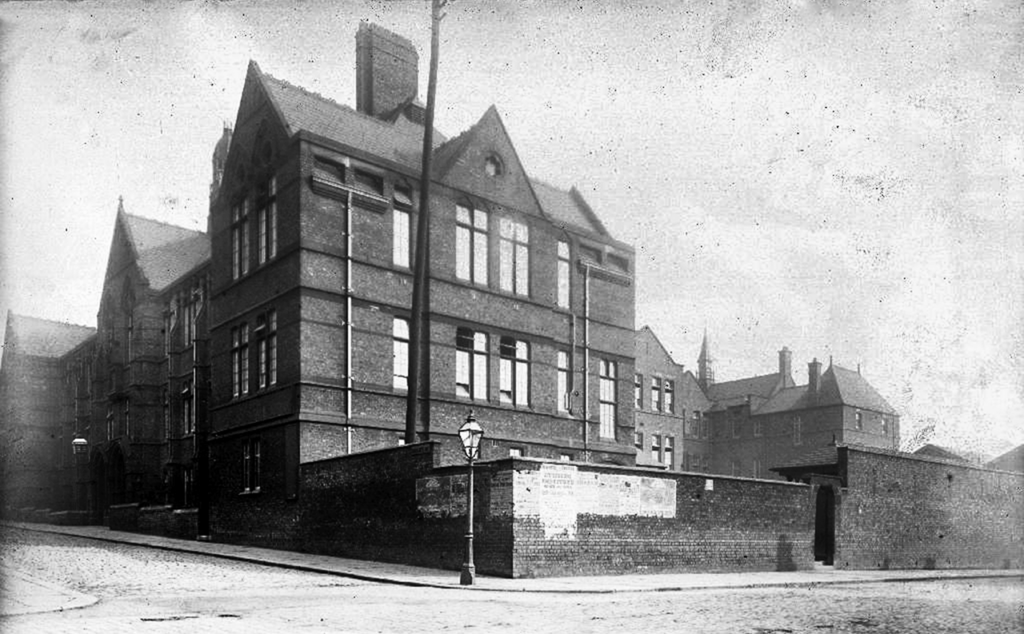
Birley Street School, where Dick received his elementary education, was a short walk away. From there, he progressed to working as a pupil-teacher at Seymour Road County School, Clayton, Manchester (locally called Seymour Road Municipal School), 1½ miles distant.
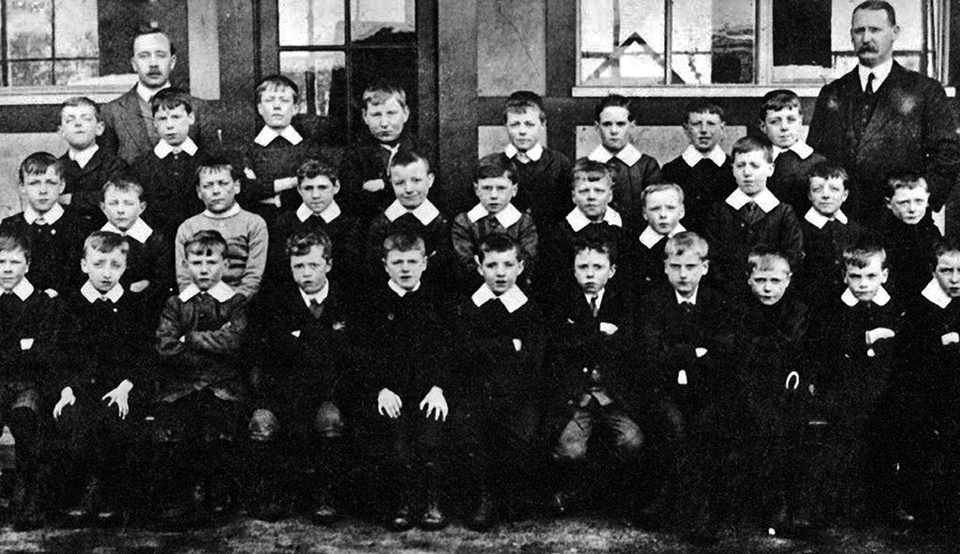
Prior to beginning his training course Dick took courses in light and heat and an examination in Chemistry. It is also noted that he was given physical training. Although it is not stated where he undertook the courses leading to these examinations, it is likely that this was Central Grammar School, Manchester; his name appears on the Roll of Honour of the school and he has no other known association with it.
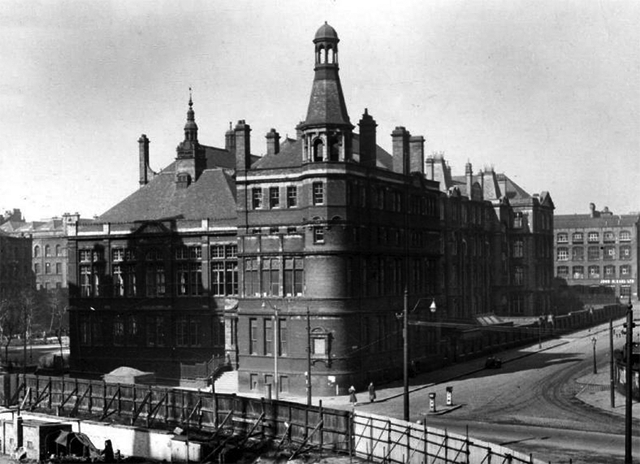
In 1913 Dick took the Preliminary Examination for the Elementary School Teachers’ Certificate’ which was in two parts. Part I had to be passed, and only those who passed it could take Part II. All of Part I was compulsory, in Part II, English, History and Geography were compulsory and then candidates would sit 3 or more options from 3 groups: Elementary Maths, Elementary Science and Foreign Languages.
By this time all the children were still at home in the Railway Inn. His elder brother Harry was working locally at an iron foundry, probably the nearby extensive Bradford Iron works, with Albert and Nellie at school.
Winchester Training College
In 1913 Dick arrived at Winchester Training College and began his two-year course, which would have ultimately led to his qualifying as a teacher. He would have completed only one year before war was declared.
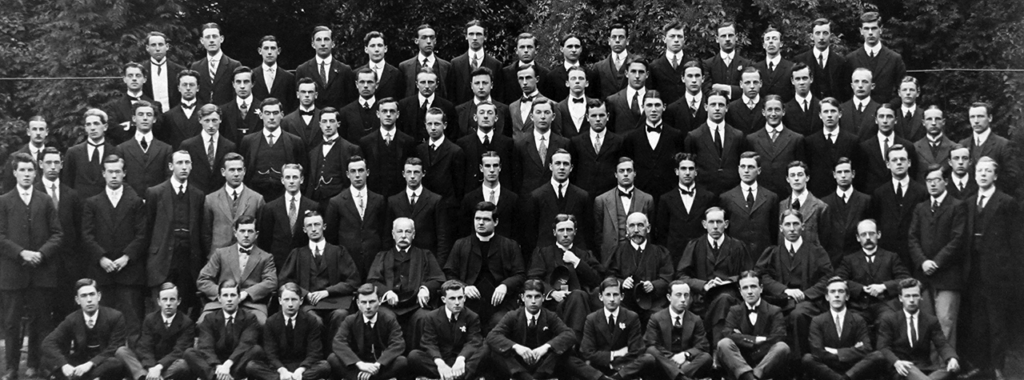
Most first years enlisted in the College Territorial Battalion (B Company of the 4th Territorial Battalion of the Hampshire Regiment) in their first week of college. In Dick’s year only four did not do so; these may have been exempt on medical grounds as it seems they did not serve in the war in any way. Dick and his new-found friends enlisted on Tuesday, 16th September. The enlistment process is outlined in the memoirs of A.T. Flight, who completed his course one year prior to Dick’s arrival. He wrote the following, recalling events some 50 years previous:
The method of enrolment2 was as follows:
On the first Saturday morning, students were told to take their places in the Junior room with Bible in hand.
The sergeant from the 4th Hants attended and gave out forms. It then proceeded something like this:
Sergeant: ‘Write your name on the top line’
Then write ’Yes.’
And so on down the sheet.
‘Put your usual signature on the bottom line.’
‘Now, take your Bible in your left hand and read aloud the oath printed in black letters.’
‘Now you are all soldiers. Any one object?!’
The first year’s training was crowded into about two months, by drills almost every day. For drills, it was necessary to wear belts and bayonets, and carry a rifle.
We were arranged in four sections. Each section consisted of two squads.
Our captain was Captain D’Arcy — a member of the staff of West Downs Prep School. The V.P. was a Lieutenant. Sergeants were H. Cole, W. Peters, A. Bogie3 and G Barker. These were all local teachers, H. Cole being a head.
His physical examination on joining the Territorial College Company tells us that he was 5ft 7½in tall with a chest measurement of 34½in, normal vision and fair physical development. His Attestation (enlistment) Form was signed by the Attesting Officer: 2nd Lieutenant B. R. Goddard, who was one of the tutors. The command of the Company was in the hands of the Principal, Captain E. G. Wainwright.
The only specific reference to Dick is that he contributed to the student magazine The Wintonian, where he wrote, ‘The first Juniors have now tasted the joys of school practice. Although the work was new to us, we managed to struggle through to the end.’
From Winchester to War
On August 4th 1914, when Britain declared on Germany, B Company were on the annual camp at Bulford, Salisbury Plain. At the time it comprised some 104 men of which 64 were Juniors (first-year students).
Upon the declaration of war, B Company were
immediately mobilised and remained under canvas at Bulford for several weeks. They were joined by Principal Wainwright, who held the rank of Captain, and by Bernard Goddard, one of the tutors, who was a Lieutenant in the Company. Early in September the Company returned to Winchester and were billeted in the college buildings, the War Office paying the college 3d. a night for each man and supplying each with rations.4
This is a shorthand account. They were moved to Hilsea, Portsmouth, from August 4th to 10th before returning to Salisbury Plain, where they trained at Bulford, Sling Plantation, Hamilton and Bustard Camps. They moved to the College billets on October 5th. (College War Supplement, June 1916)
While most of the College men who were at camp were transferred into the 1/4th or 2/4th Battalions of the Hampshire Regiment and posted to India then Mesopotamia, there were a few who, like Dick, were not. Territorial soldiers, as their title suggests, were enlisted for home service and needed to sign a further authorisation to subject himself to liability to serve in any place outside the United Kingdom in the event of National Emergency‘. This was voluntary; Dick did not sign his until 6th February 1915. Following the annual camp, he was assigned to 3/4th Hants Depot Battalion.
He was appointed Lance Corporal on 17th April 1915 and then Corporal on 11th June. On 31st July5 he is further promoted, crossing the great divide between ‘Other Ranks’ and ’Commissioned Officers’ as he was granted a commission as 2nd Lieutenant in the 14th Reserve Battalion of the Manchester Regiment. His new unit was then stationed at Brocton, 3½ miles southeast of Stafford. It has to be assumed that the period served as Corporal in June and July would have been at an Officers Training Corps.

On 29th May 1916, Dick was admitted to 1/4th Northern General Hospital in Lincoln, from Brocton Camp, with a large polyp obstructing his left nasal passage. A medical board convened on 16th June 1916 decided that there was no indication that an operation was necessary and that his condition was improving under treatment. It was recommended that he be allowed sick leave for a month. By the 22nd July 1916 he was declared fit for General Service when the medical board re-examined his case.
On return, Dick was posted to the 17th Manchester Regiment and his Medal Index Card shows that he entered the Western Front in August 1916. The date is significant: it shows that he was a part of the replacement units sent in after the massive losses in the early days of the Somme offensive.
The 17th Manchesters on arrival in France were still part of the 30th Division. They were moved to the Somme area to be part of the reserve and to be used as needed as the offensive developed. The logistics behind the Somme offensive were enormous; the number of men and weapons involved was on a titanic scale, with losses swallowing up soldiers in a fashion never been seen before on both sides.
Dick found himself embroiled in the Battle of Le Transloy—the last offensive of the Fourth Army of the British Expeditionary Force (BEF) in the 1916 Battle of the Somme. The soldiers of the British, French and German armies endured miserable conditions. The German command knew they had to weather the onslaught until the onset of winter would end the Somme offensive. The British and French benefitted from superior numbers, which enabled the Allied Commanders to relieve divisions after shorter periods in the line. Persisting in such an offensive has subsequently given rise to criticism of the Allied Commanders but the British losses in the battle are in the wider context of strategic subordination to French wishes to support their attacks south of Le Transloy.
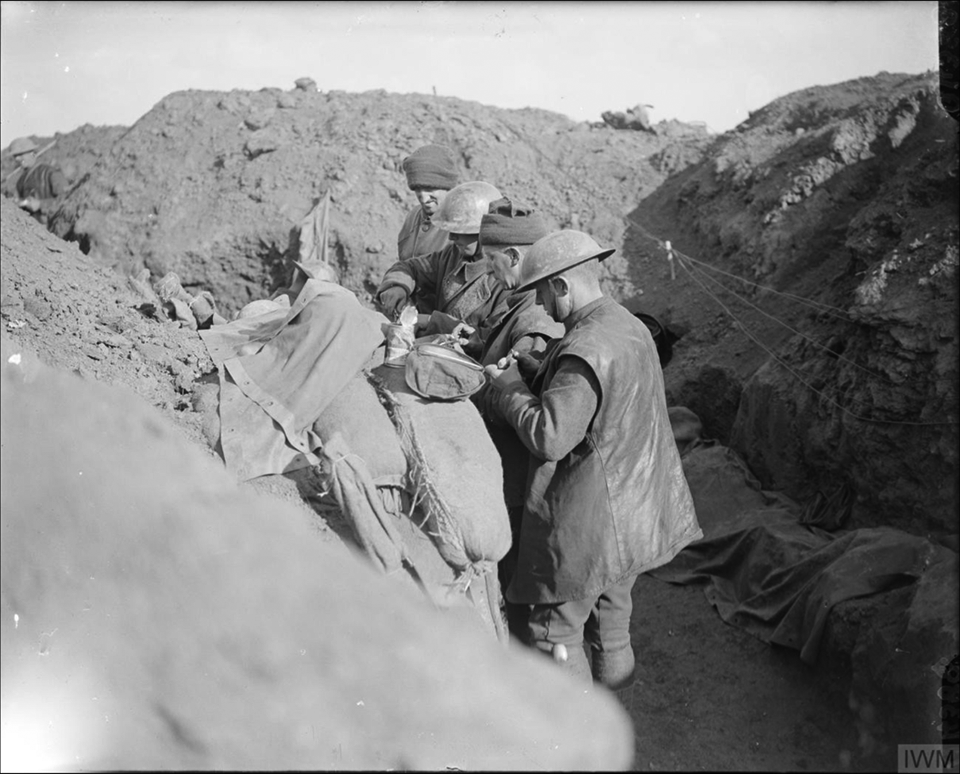
The 17th Manchesters were to be part of an attack to take Bayonet Trench, to the northwest of Gueudecourt. The build-up to the attack is outlined in the Battalion Diary:
10th October: Left Fricourt at 6.15am to relieve the 41st Division (North of Flers). This Battalion relieved 26th Royal Fusiliers and the 12th Kings Royal Rifle Corps, relief being complete about midnight.
11th October: Took over from 2nd Bedfordshire Regiment on the left of the Brigade front line. C Company joined the Battalion on the night of the 11th. 5pm Brigade Operation Orders for the attack received.

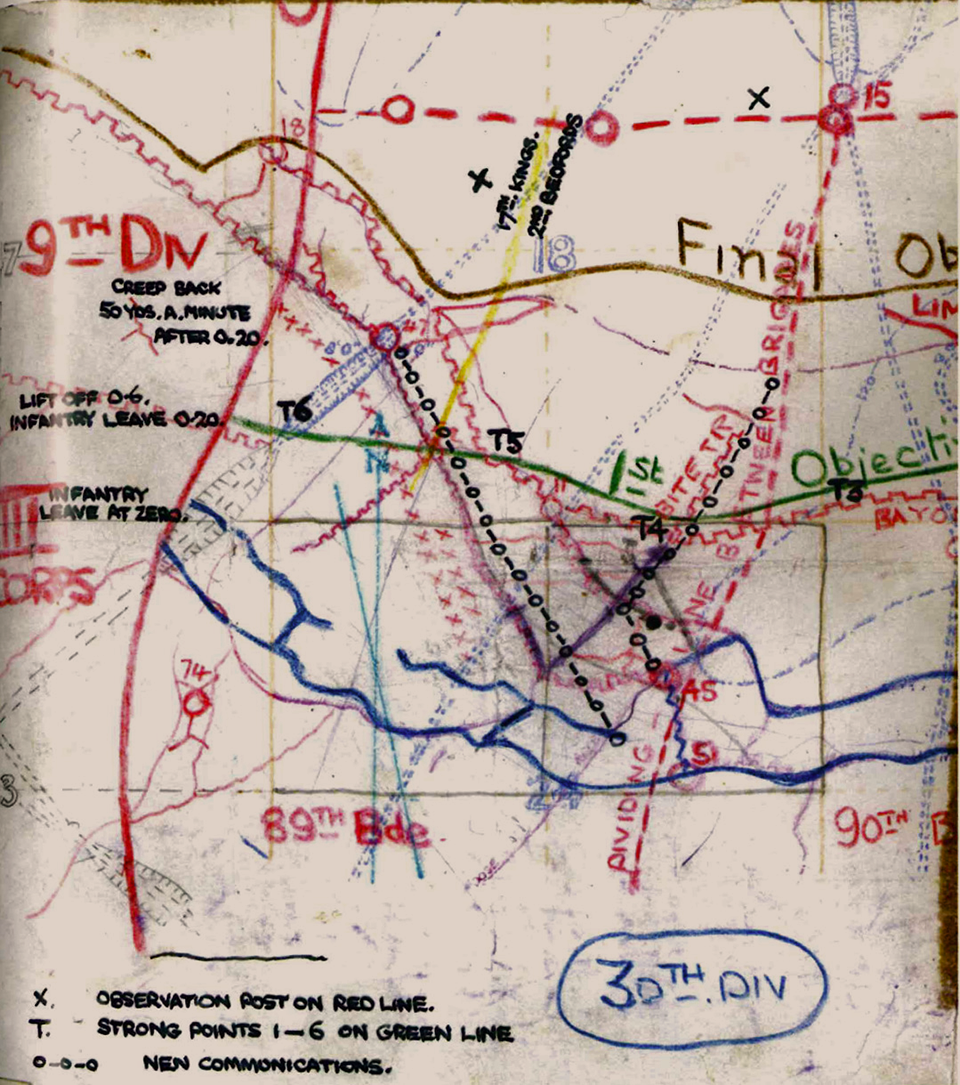
The orders specified The greatest care must be taken to keep very low and quiet in the trenches. Bayonets will not be fixed until two minutes before Zero. In case there is any error in timing men must be ready to fix on hearing the barrage start.‘ Zero hour was to be 2.05pm. The attack would begin with the assaulting Battalions moving forward from present front line trenches at Zero. Infantry will keep as close as possible to the Artillery Barrage.’
Reading again from the Battalion War Diary:
12th October, 2.05pm: The Battalion attacked. Suffered heavy casualties—very little ground gained.
The Scottish Fusiliers managed only to advance 150 yd (140 m) into machine-gun fire and were forced to withdraw. Some parties of the 17th Manchester got into Bayonet Trench before retiring. At some point during the afternoon Dick was killed in action. He was 21 years old.
His body was never found, and his name is remembered on the panels of the Thiepval Memorial to the Missing.
Dick died without making a will. When his effects were finalised, his father was sent £64 6s 3d and the only item mentioned on his inventory, a wristwatch.
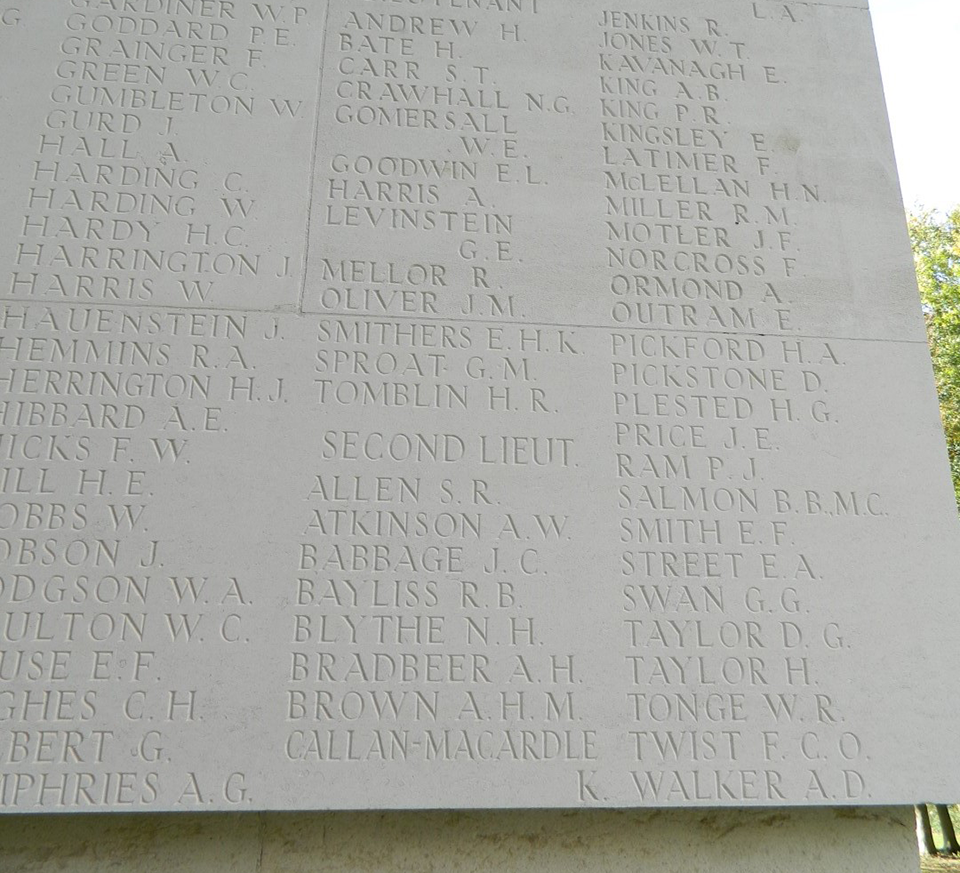
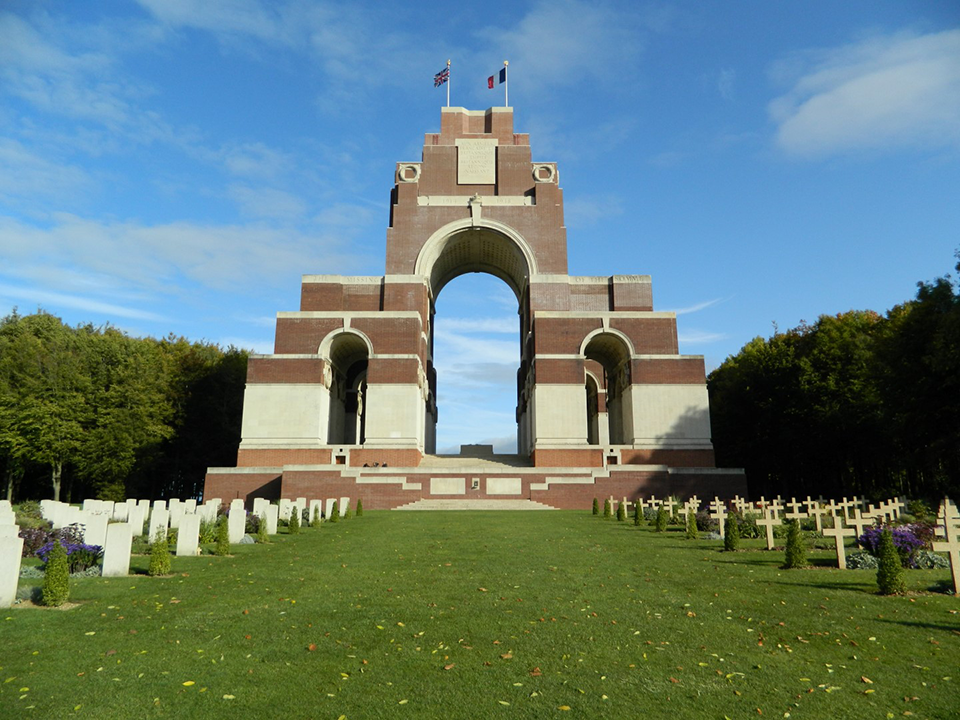

Researcher and Author: John Westwood, revised with additional material by John Vickers
Sources
For all general Winchester Training College records please see the list of University of Winchester sources at the end of the following Sources list.
Ancestry (2018). Home page. [online] Available at: www.ancestry.co.uk [Accessed 2018].
Commonwealth War Graves Commission, (2018). Home page. [online] Available at www.cwgc.org/ [Accessed 2018].
Hurst, S.C. (1929). The Silent Cities. London: Methuen and Co.
The London Gazette. (2019). Page 7728 | Supplement 29253, 3 August 1915 | London Gazette | The Gazette. [online] Available at: https://www.thegazette.co.uk/
London/issue/29253/supplement/7728 [Accessed 29 May 2019].
The National Archives. 2/Lieutenant Dick PICKSTONE The Manchester Regiment, WO 339/35120. London.
Rose, M. (1981). A history of King Alfred’s College, Winchester 1840-1980. London: Phillimore.
Vickers, J. University of Winchester Chapel Memorial Rail image.
University of Winchester Archive at Hampshire Record Office
All the following documents are general background resources for the WTC Fallen project and provide general period background of students, college life, staff, activities, etc. The Finding Numbers are given to aid archive searches.
47M91W/P2/4 The Wintonian 1899-1900
47M91W/P2/5 The Wintonian 1901-1902
47M91W/P2/6 The Wintonian 1903-1904
47M91W/P2/7 The Wintonian 1904-1906
47M91W/P2/8 The Wintonian 1905-1907
47M91W/P2/10 The Wintonian 1908-1910
47M91W/P2/11 The Wintonian 1910-1914
47M91W/P2/12 The Wintonian 1920-1925
47M91W/D1/2 The Student Register
47M91W/S5/5/10 Photograph of 5 alumni in Mesopotamia
47M91W/Q3/6 A Khaki Diary
47M91W/B1/2 Reports of Training College 1913-1914
47M91W/Q1/5 Report and Balance Sheets 1904- 1949
47M91W/R2/5 History of the Volunteers Company 1910
47M91W/L1/2 College Rules 1920
55M81W/PJ1 Managers’ Minute Book 1876-1903
71M88W/6 List of Prisoners at Kut
All material referenced as 47M91W/ is the copyright of The University of Winchester. Permission to reproduce photographs and other material for this narrative has been agreed by the University and Hampshire Record Office.
- To give a sense of location, the pub was 300m west of the Etihad Stadium. Both roads still exist but have been redeveloped. Viaduct Street has been renamed Councillor Street.
- This is an incorrect term. Students enrolled in the old Volunteer Company up to 1908. The College Company then came under Territorial Force rules and entry by enlistment was required. Under then new regime, students were subject to military discipline at all times.
- Andrew Bogie, one of the 61 Fallen of the College who died under Ottoman captivity in present-day Turkey. A student 1902-1904, he was at this time working in St. Thomas’s School, Winchester. As this was also a practising school for students, Dick would have dealings with him during the practical work of the course.
- Rose, M. A History of King Alfred’s College, Winchester 1840-1980. p.66
- His Army records vary between 30th and 31st July. He is listed in the London Gazette as promoted and transferred on 31st. The gazetting is usually seen as authoritative.
